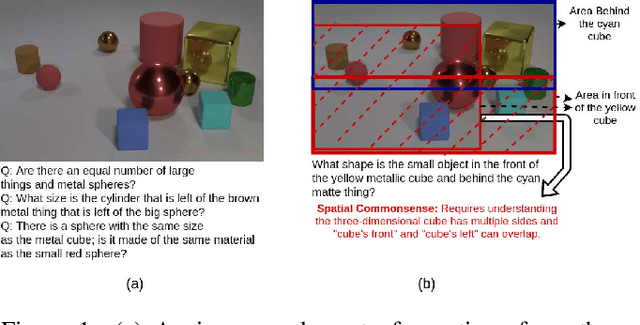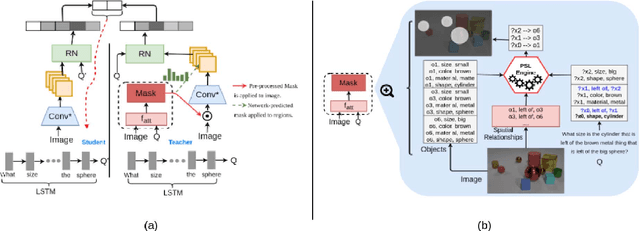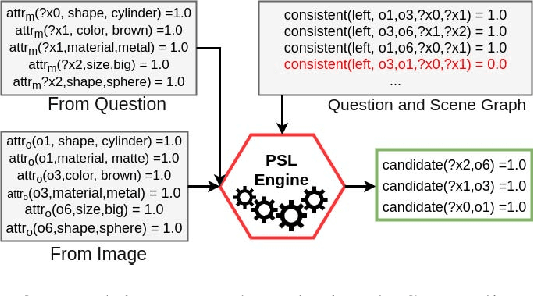Spatial Knowledge Distillation to aid Visual Reasoning
Paper and Code
Dec 11, 2018



For tasks involving language and vision, the current state-of-the-art methods tend not to leverage any additional information that might be present to gather relevant (commonsense) knowledge. A representative task is Visual Question Answering where large diagnostic datasets have been proposed to test a system's capability of answering questions about images. The training data is often accompanied by annotations of individual object properties and spatial locations. In this work, we take a step towards integrating this additional privileged information in the form of spatial knowledge to aid in visual reasoning. We propose a framework that combines recent advances in knowledge distillation (teacher-student framework), relational reasoning and probabilistic logical languages to incorporate such knowledge in existing neural networks for the task of Visual Question Answering. Specifically, for a question posed against an image, we use a probabilistic logical language to encode the spatial knowledge and the spatial understanding about the question in the form of a mask that is directly provided to the teacher network. The student network learns from the ground-truth information as well as the teachers prediction via distillation. We also demonstrate the impact of predicting such a mask inside the teachers network using attention. Empirically, we show that both the methods improve the test accuracy over a state-of-the-art approach on a publicly available dataset.
 Add to Chrome
Add to Chrome Add to Firefox
Add to Firefox Add to Edge
Add to Edge